“But we have backup.”
Those famous last words are being spoken throughout Texas, and soon to be the east coast with hurricane Harvey having dumped rain on Houston, and Irma bearing down at Category 5 strength.
“Backup” is an umbrella term that takes into account type, media, and location. Unfortunately in most instances, data is lost because the “Backup” is not aligned with best practices and designed to protect data during a disaster. This short post is not meant to be a technical, deep dive into data backup but will be helpful when discussing survivability when disaster strikes.
Having best practices and being aligned with them for data backup is as simple as 3-2-1.
This strategy basically addresses the number of copies of data, the locations of the backup, and the inclusion of a remote component. The focus of the strategy is to increase the number of copies, locations, and remote component to increase the survivability.
The first step is to have three (3) copies of your data. This would include the original production, or working data. The backup copies might be an image, file/folder, or application specific like QuickBooks.
The second step is to have two (2) locations for the copies. This might include the production servers with a set of hard-drives to increase redundancy and then a secondary device which might include a server with a different set of hard-drives, removable storage media such as USB drives, external hard-drives, SD Cards, CDs or DVDs) to increase portability of small backups.
The final step is to have one (1) copy off premise or remote. Not too long ago, this was accomplished by shuffling tapes and hard-drives. However, this was found to be cumbersome and often failed. Today, remote components include the ability to store encrypted backups in remote data centers seamlessly as part of the backup strategy. The remote copy is meant to hedge loss due to natural or man-made disaster including flood, fire, or theft.
Let us know what you’re doing for backup and if you would like to talk more about evaluating your strategy and making sure it's aligned with the 3-2-1 best practice.


